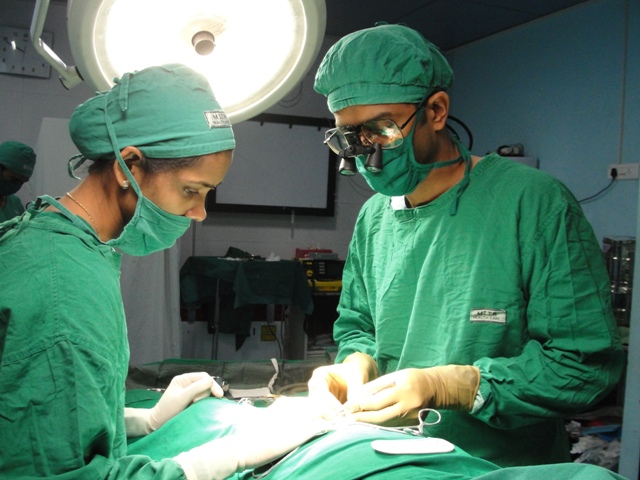Last Monday was like any other Monday. My pediatric urology clinic was full with appointments and I was getting into the rhythm of seeing children with complicated urinary problems and hypospadias. A young couple walked in with twin male babies, each about 7 months old. The boys were naughty and attentive and soon were soaking in the yellow and pink and greens of my outpatient clinic. I looked at the file and asked them the pediatric urological issues for which they were seeing me that day. They said their kid had hypospadias and both of them had hypospadias infact and they wanted to see a Pediatric urologist. Now that was a shocker!! Though this was not the first time that I was seeing twin boys with Hypospadias, but it was that once in two years phenomenon. And more striking since these boys had exactly the same type of hypospadias- which was distal penile hypospadias with mild chordee. Last year I had treated two brothers with hypospadias but the age was 3 and 5 years and thus difference in age was 2 years. The elder one has a mid penile hypospadias while the younger one had a distal penile hypospadias. I suddenly remembered the dilemmas which face a Pediatric Urologist & a Hypospadiologist while treating siblings with hypospadias.
• Which boy do you treat first – plan according to age – elder first or severity wise and severe hypospadias first and minor later?
• Whether you do them the same day or one after the other or with some gap of days in between?
• How will the parents manage two babies getting operated for the same thing at the same time?
• And if you operate one baby with hypospadias first and second one a few days later- what is the effect on their minds? How do they cope up with a situation where one has undergone a hypospadias surgery and the other one is waiting. Does the second kid get scared seeing the first one in pain after surgery and undergoing hospital visits and checkups? It was a tough situation to be in – for me as a hypospadias surgeon and even more for the parents who will have to care for the children 24×7 after surgery.
After a lot of deliberation, we decided that we do the hypospadias repair one after the other but on the consecutive days at MITR Hospital & Hypospadias Foundation. We admitted the elder sibling (with more severe hypospadias) for surgery on Tuesday morning and surgery was conducted as the first case in the morning. The younger kid was admitted on Wednesday morning and underwent uneventful repair on Wednesday itself. We arranged for two beds in one room so that both of them can share their side of the story. At least here there was no scope of having a feeling of being left out. Both of them for a fact got a HYPOSPADIAS SURGERY. Recovery period after surgery was smooth and both of them were discharged on Wednesday evening. The kids came back for follow-up on the same day after a week and their catheters were removed the same day. The children pee’d and actually compared their streams and for me luckily- both had good thick straight urine streams without any complications. Deep inside, throughout the recovery period, I was a bit worried about a complication happening. Luckily, everything went well and I had two happy kids with me. Now coming back to present case at hand- where I have a set of twin babies with hypospadias. So going by my previous experience, I think we will stick to the same plan. The only advantage here is that the kids are still less than one year of age and they won’t think much about surgery. I am planning to do them on a Tuesday and a Wednesday and then send them home on Wednesday itself.
Medicine lends itself to unusual off the script events every day and as we say every patient has a story. For us at Hypospadias Foundation – we believe every child hypospadias has a story with happy ending.
Contact Form for Hypospadias Foundation
Please fill all clinical details and upload pictures and clinical summaries (if available)

